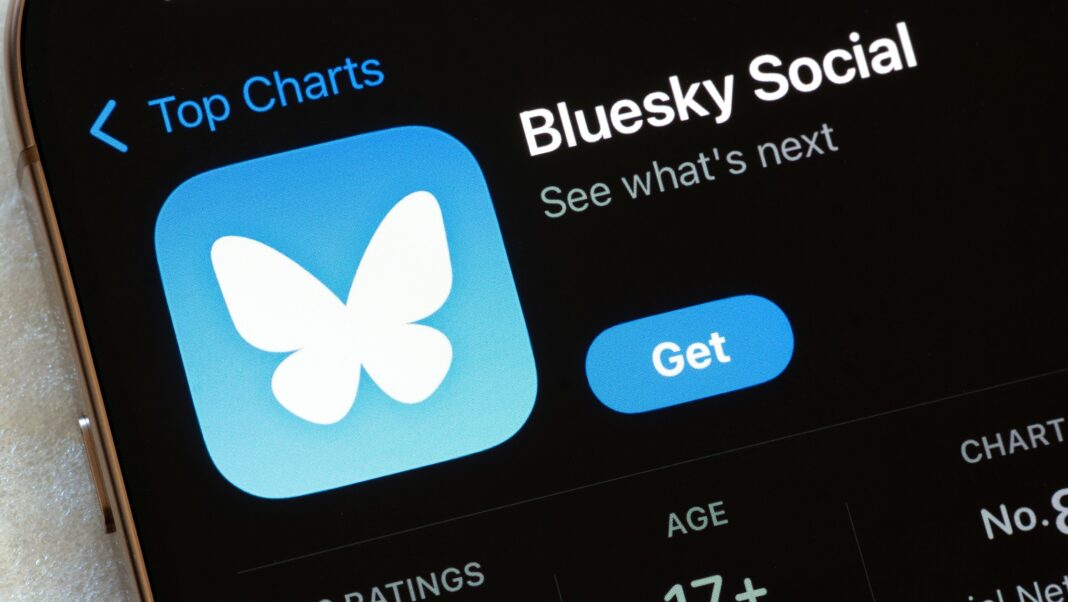Bluesky has become a beacon for users seeking an alternative to existing social media platforms, particularly since the U.S. presidential election. Many are turning to Bluesky to escape what they perceive as a shift to the right on Elon Musk’s X, previously known as Twitter. This trend is not merely a defensive reaction, but a proactive search for a space that feels more aligned with their values, especially considering the growing dissatisfaction with Meta’s Threads and the algorithmic limitations it imposes.
Originating from Twitter under Jack Dorsey’s vision, Bluesky was intended to offer a decentralized approach to social networking. Although its original goal of replacing Twitter’s core functionality is no longer viable due to the two companies’ separation, Bluesky’s user growth has been remarkable. Since October, its user base has more than doubled, indicating that it could evolve into a formidable competitor in the social media landscape.
Despite its rapid expansion, Bluesky faces a significant challenge: the influx of bots. While genuine users are flocking to the platform, automated accounts—some designed to sow discord or promote misinformation—are also making their presence felt. This creates a complex landscape for Bluesky, which positions itself as an alternative free from the pervasive issues affecting its more established counterparts.
The statistics paint a striking picture of Bluesky’s growth. As of now, the platform has surpassed 25 million users, representing a 295.4% spike in monthly active app users on iOS and Android in November, according to Similarweb. The total web visits surged to 56.2 million, a 189% increase. Such growth is unprecedented for a platform of its age, raising eyebrows and concerns in equal measure.
The boost from the U.S. elections was further amplified by X’s brief ban in Brazil, which pushed users to seek alternative platforms. Laura Edelson, an expert in computer science, noted that this sudden surge of attention inevitably attracts spammers and malicious actors. Yet, with Bluesky’s limited resources and a lean team, managing this influx poses significant hurdles.
To better manage its user base, Bluesky initially operated as an invitation-only platform. This approach allowed it to refine its moderation tools before opening the floodgates in February. One of the innovative features developed during this period was the “starter packs,” which curate topical feeds for users—something that Meta recently began testing as well.
In crafting its identity, Bluesky has established a value system distinct from larger platforms like Meta and X. According to Claire Wardle, a misinformation expert at Cornell University, Bluesky offers users greater control over their online experience. The platform emphasizes that social media doesn’t have to be dictated by wealthy individuals making unilateral decisions about content visibility, promoting a more user-centric ethos.
This reputation for being the scrappy underdog has drawn users exhausted by monopolistic platforms. Many believe in Bluesky’s potential to foster a different kind of social network. However, as user numbers swell, the risks of misinformation and divisive content also increase exponentially.
Reports have emerged about the potential for AI-generated bots to infiltrate Bluesky. Users like Lion Cassens, who noticed abnormal interactions on the platform, voiced concerns about the evolving nature of bot networks and their ability to mislead users. While current accounts may appear relatively harmless, their future implications are troubling.
The existence of duplicate and impersonator accounts is yet another complication for Bluesky. Recent findings revealed that 44% of the most followed individuals on the platform had at least one fraudster account impersonating them. Bluesky has responded to this issue by significantly increasing its moderation team, aiming to swiftly tackle duplicate accounts and enhance community guidelines.
In light of these challenges, Bluesky stands at a crossroads. Edward Perez, a board member at the OSET Institute, emphasizes the urgent need for Bluesky to prioritize addressing threats. Without quickly implementing measures to curb disinformation and harmful content, Bluesky risks stagnation in user growth.
Yet, the platform’s hurdles don’t end there. As a text-based network, Bluesky might struggle to attract younger demographics. A recent Pew Research poll highlighted a drop in X usage among American teenagers, a clear signal that visual-centric platforms like TikTok and Instagram are dominating the space among youth.
Moreover, the increasing political polarization could hinder Bluesky’s aspirations of rivaling giants like TikTok and Instagram. According to Wardle, the time when one platform could cater to all demographics appears to be in the past. As social media evolves, platforms are carving out niches, often shaped by users’ political beliefs and preferences.



